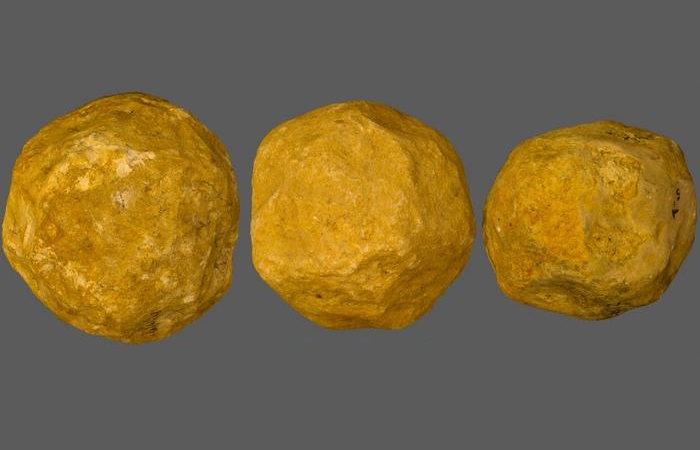Who or What Made These Mysterious Stone Balls Found at Ancient Sites?
Posted on Categories Discover Magazine

In Stone Age sites all over the world, archaeologists have found rounded stone “spheroids” that fit in the palms of their hands. A bit too heavy for tossing around, the balls have cropped up in Africa, Asia, Europe and the Levant, the countries gathered near the eastern shore of the Mediterranean. No one knows what purpose the balls served, be it practical, personal, aesthetic or something yet unimagined.
Scientists have also disagreed on whether early humans made the objects intentionally – through a painstaking process – or unintentionally.
A new study from researchers in Israel and Spain claims to have settled the matter using sophisticated geometrical analysis. Yes, they say, these balls sometimes labeled polyhedrons, sub-spheroids and bolas were created intentionally, and this realization could have major consequences for our understanding of early human technology.
Ancient Stone Spheres
For the paper, the team analyzed 150 limestone spheroids of various shapes taken from an ancient site in northern Israel called ‘Ubeidiya after a nearby Palestinian village. Today, the site is a dry, grassy field, but some 1.4 million years ago, it bordered on a large lake and played host to varying groups of Homo erectus humans.
One of modern humans’ most important ancestors, H. erectus was the first hominid to possess modern-like body proportions, and it also made distinctive hand axes, a technology that spread around the world. With such a resume, H. erectus may have possessed the know-how to fashion a spheroid.
Read More: Homo Erectus: What Do We Know About Our Early Ancestors?
Knapping Limestone Spheroids
To build a better case, the researchers laser-scanned the balls and analyzed their dimensions, paying particular attention to how their surfaces had been chipped and shaped. With the resulting data, they reverse-engineered the spheroids and estimated how someone could have chipped away at the rock, step by step. The Stone Age craftsman may even have used a stone anvil in the latter stages or some other special technique.
The authors argue that such large numbers of spheroids could only have come from human hands.
“Surface smoothness can be the result of natural phenomena, while sphericalness, where an item’s geometry approaches that of a true sphere, is very rare in nature,” the paper said. “River cobbles can become smoother with more rounded edges after long periods submerged in running water, but they almost never approach a truly spherical shape.”
Read More: Ancient Skull Found in China Might Be Homo Erectus
What About Earlier Spheroids?
If the researchers can extend their findings to earlier spheroids found in Africa, from the Oldowan stone industry, then the balls could serve as some of the first evidence of hominid intelligence. The Oldowan period ran from about 2.5 million years to some 1.2 million years ago, during which Homo habilis made the earliest known stone tools, simple “choppers” used for cutting and scraping.
Read More: What We Know About Homo Habilis